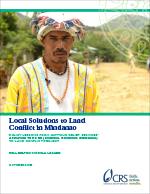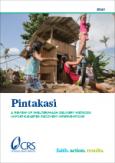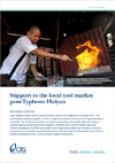Evaluations/Assessments | October 1, 2015
Local Solutions to Land Conflict in Mindanao
This paper presents key lessons from the Applying the 3Bs (Binding, Bonding, Bridging) to Land Conflict (A3B) project implemented over a three-year period in twenty barangays in four municipalities in Central Mindanao.
As the A3B experience shows, a focus on local policies and practices is both expedient and responsive to the multi-faced causes and dynamics of land conflict by providing the flexibility to adapt to actual circumstances in communities.
A3B also illustrates the critical role of civil society in laying the foundation for these localized policy changes, including demonstrating the potential for resolving seemingly intractable land conflicts. A3B combined a grassroots, bottom-up approach to policy reform—generating citizen demand for accountability and performance from local government units and from government line agencies responsible for land administration—with strategic use of existing reform platforms, such as the Joint Administrative Order (JAO) of 2012 that mandated coordination and cooperation among these line agencies.
A3B also strengthened the capacities of Lupong Tagapamayapa (LTs), the barangay-level conflict resolution structures mandated to adjudicate land claims without going through the court system; LTs were complemented by the engagement of traditional and religious leaders acting as mediators and facilitators. Throughout the project, relationship-building at all levels was a critical foundation for policy and structural change.




